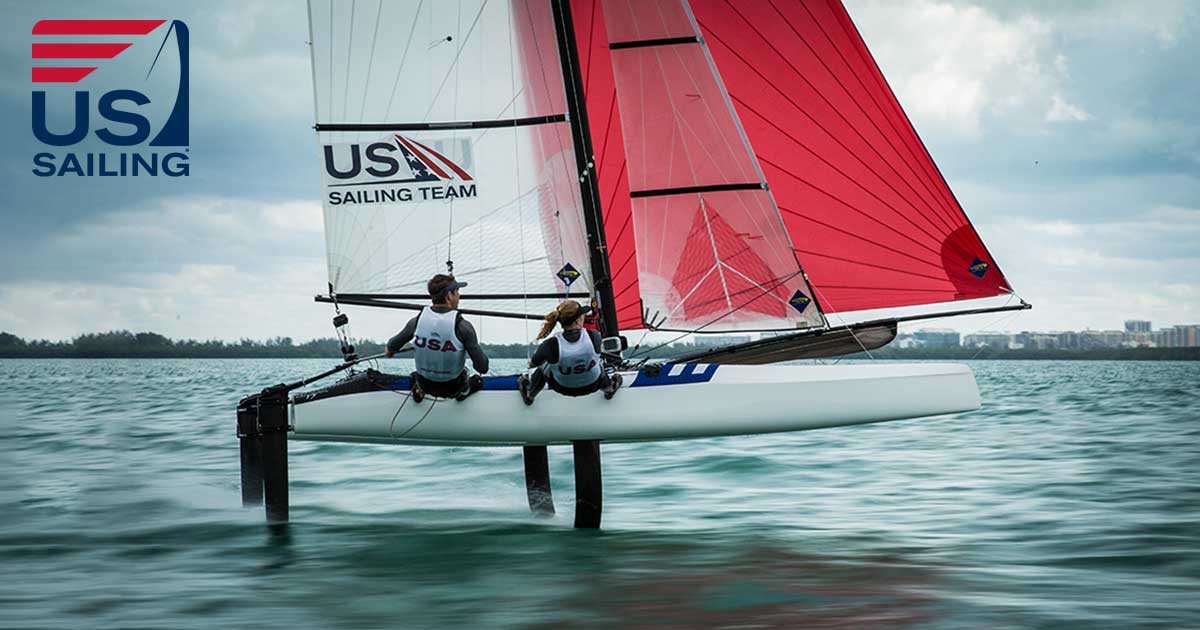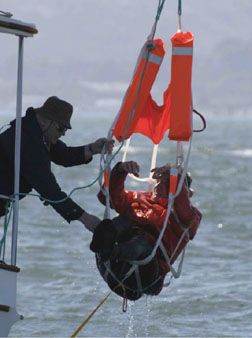Dave S
Active Member
http://www.usedvictoria.com/classified-ad/Fender-Step_16973117
maybe this would work, maybe not.....
maybe this would work, maybe not.....
If someone goes over the side you need to be aggressive and fast. Only seconds in the water and they may be incapble of using a ladder. Get them out of the wet clothes and into dry ones or a heated space. Get on the radio to Coast Guard and request medical advise, you can kill someone warming them up to fast...Bret. PS If I'm on the boat my Mustang Inflatable is on me...

One of the reasns I went to the Seattle Show was their education program. All of the seminars were professionally recorded and will be sent out to participants in the next week or so,
I was able to attend women's day where they provided excellent semianrs on Radar, navigation, tides, currents and most interestin for me the use of the Life Sling.
The instructors were both excellent one was a registered Captain and the other was involved in a lot of technical issues with the state government and the USCG.
They used real life rescue information in their class.
There was a 90 minute talk on the Life Sling, Real world use and a long discussion of how 3 crew members (Daughter,Son and Father) in a sailing race (WA State) all ended up overboard through a series of freak events while trying to rescuue the first crew member who fell overboard. Only one crew member (the least experiences) was left onboard within a matter of minutes
The crew of the boat who reversed course and affected a live rescue of all three overboard sailers were recently awarded the Andrew B Hansen Rescue Medal (not yet posted as of this date)

The Arthur B. Hanson Rescue Medal - US Sailing
The Arthur B. Hanson Rescue Medal is an award given to skippers of pleasure boats or race support vessels who effect rescues of victims from the water. The award is made for rescues in U.S. waters, or those which occur in races originating or terminating in a U.S. port. The purposes of the award...www.ussailing.org
Most of our boats are at a disadvantage in getting an overboard crew member aboard, compared to sailboats that have winches and halyards to assist in getting the person aboard.
This seminars were based in the idea of a couple on the boat and one of the two falling overboard.
I will see if I can get permission to post up the Life Sling seminar
NOTE: While the LifeSling is USGC approved it is Not Transport Canada Approved and does not replace a lifebuoy
Buy Lifesling 2 Resue System Softpack in Canada Binnacle.com
ca.binnacle.com
|
This brand was mentioned in the seminar, and it's lower cost was tactfully stated as it's only redeeming feature. According to the speakers there is a noticable difference between the original and others. Another factor tobe considered is the amount of bouancy in the tow slingsHere is another manufacturer somewhat cheaper
Lalizas Life Link Man-Overboard Rescue System - 20440 $107 usd

 www.practical-sailor.com
www.practical-sailor.com
This brand was mentioned in the seminar, and it's lower cost was tactfully stated as it's only redeeming feature. According to the speakers there is a noticable difference between the original and others. Another factor tobe considered is the amount of bouancy in the tow slings
I was intrigued by your post and I like to save a buck when possible but I won't compromise safety to save money so I tried to find out some comparative information on the Lalizas and the Life Sling
I was unable to find out the buoyancy of the Lalizas and if it had either or both USCG and UL approval.
Buoyancy of the Life Sling is : 21 lbs
Specifications:
Note: Approved for use as lifting sling only on sailboats longer than 20 ft. LOA and powerboats with lifting point 10 ft. above water
- Color: Yellow (flotation collar and line) with white storage bag
- Buoyancy: 21 lbs
- Floating Retrieval Line Length: 125 ft.
- Regulatory: UL and USCG approved
- Dimensions (storage bag): 12-1/2" W x 22" H x 5" D
The Binacle has the Life Sling for sale for 369.00 Cnd with Free shipping.

Slings, Scoops & Ladders - Practical Sailor
Since 1974, Practical Sailor’s independent testing has taken the guesswork out of boat and gear buying.www.practical-sailor.com
I wrote to Lalizas and asked them the following questions
Good Morning
1. Is the Lalizas Life Link Man-Overboard Rescue System certified or approved by the following organizations :
a) certified by UL (Underwriters Laboratory,
b) approved by the USCG (United States Coast Guard )
2. What is the Measured Amount of Buoyancy (in Pounds and/or Kilograms) provided by the Lalizas Life Link Man-Overboard Rescue System?
Thank you for your help.
Sincerely.
Hopefully, I get an answer in the next few days.
Thanks for mentioning the Lalizas system. I will share my response when received
Now We Wait.........
You Polar Bears!In addition to avoiding risk factors that could result in falling overboard, if you spend a lot of time on the water in the colder months, it’s probably not a bad idea to acclimatize your body to cold water. Either by cold swimming, ice baths, or showers. Even a week or so of daily cold exposure can reduce the shock response to the cold (there are studies that back this up, and anecdotally it was true for me). Slowly working your way up to more intense exposure is probably a good idea.
Well, I might not have a jammer from cold shock but it will still suck. A suit would be a hell of a lot more comfortableYou Polar Bears!
I think I'll wear my cruiser suit, instead.
I remember doing Liferaft Drill where we had to pull guys out of the water and into the raft. To just pull them out was hard even with a couple of people working it. What we were told to do is push the guy down into the water and let the lifejacket bouyancy pop him up and in one motion drag him into the raft. Works really well.
I wear it in the winter but usually unzipped at the chest - too warm.Well, I might not have a jammer from cold shock but it will still suck. A suit would be a hell of a lot more comfortable
| Miguel Norato Country Manager |
| http://www.lalizas.com |
